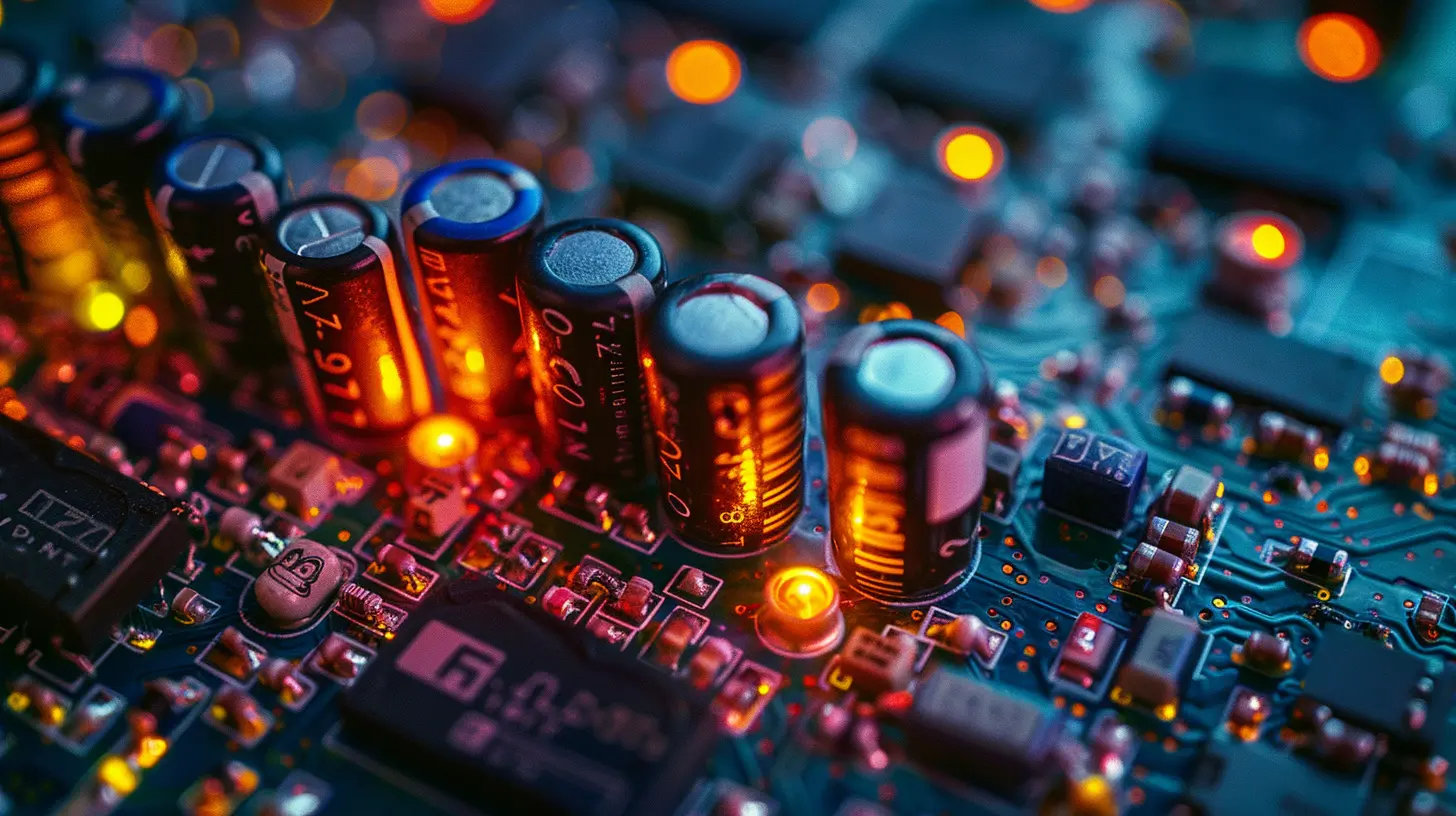Exploring the Latest in Battery Technology for Gadgets
22 July 2025
Let’s be honest—battery life is the one thing about our gadgets that always seems to fall short. You get a shiny new phone, a slick smartwatch, or a crazy-powerful tablet, and then BAM! That dreaded low battery alert shows up just when you need it most. It’s the modern version of running out of gas in the middle of nowhere.
But guess what? Battery tech is finally catching up to our needs (and maybe even our wildest dreams). So, in this article, we're diving deep into the buzzing world of electrons, anodes, and miracle materials to see what’s really happening behind the scenes in the land of batteries.
Grab your metaphorical lab coat—let’s geek out on the latest in battery technology for gadgets.
🔋 The Root of the Problem: Traditional Lithium-Ion Woes
Before we jump into the cool futuristic stuff, let’s have a quick reality check.Lithium-ion batteries have been the MVPs of our gadgets for decades. They’re in your phone, laptop, AirPods—you name it. But they’re not perfect. You know the drill:
- Limited lifespan
- Heat problems (hello, spontaneous combustion?)
- Slow charging
- Not-so-eco-friendly production
Honestly, they’re like that old friend who’s great until they borrow your Netflix password and never give it back.
So, what’s the solution? Enter the new kids on the battery block.
🔥 Solid-State Batteries: The Holy Grail?
Let’s talk solid-state batteries—the tech world’s version of a unicorn.Unlike traditional batteries that use liquid electrolytes (which are flammable and leaky), solid-state batteries replace that liquid with a solid material. Sounds simple, but the benefits are anything but average.
Benefits of Solid-State Batteries:
- 🚀 Faster charging- 🧊 Higher safety (no fire hazard fun here)
- 🧠 Longer lifespan
- 📏 Thinner & more compact design potential
Imagine charging your phone in 10 minutes flat and not worrying if it’s secretly turning into a firecracker in your pocket. Yeah, solid-state is kinda a big deal.
Companies like Toyota, Samsung, and QuantumScape are throwing serious money into this tech. But there’s a catch—it’s still hella expensive to produce and tricky to scale. So while it’s not mainstream yet, it’s definitely on the horizon.
🌱 Graphene Batteries: Supercharge Me, Baby
If batteries had personalities, graphene batteries would be the ones chugging espresso while running a marathon.Graphene is basically a single layer of carbon atoms arranged in a honeycomb pattern. It's thin, light, stronger than steel, and more conductive than copper. In battery terms? That translates into mind-blowing performance.
Why Graphene Batteries Are The Talk of the Town:
- ⚡ Ultra-fast charging (think minutes, not hours)- 💪 Higher capacity (more juice in your device)
- ❄️ Low heat generation
- ♻️ Potentially more eco-friendly
They’re still relatively new, but brands like Realme and Samsung are already experimenting with graphene-enhanced batteries in phones. You might not even realize that your next device could be packing this futuristic punch.
🧪 Silicon Anodes: The Little Upgrade With Big Impact
Okay, so picture this: lithium-ion batteries typically use graphite anodes. But what if we swapped graphite with silicon?Boom. Instantly, you get batteries that can hold up to 10 times more charge. Yeah, you read that right.
The Upside of Silicon Anodes:
- 🔋 Dramatically increased energy density- 🎮 Longer gadget use time between charges
- 📉 Smaller battery sizes with same performance
Of course, there’s a downside (because there always is): silicon likes to expand while charging, which can cause damage over time. But scientists are working on ways to stabilize it—like adding nano-coatings and flexible binders. Sounds fancy, right?
You might not know it, but companies like Tesla and Huawei have already started integrating silicon anodes into their battery tech, so the future’s kinda already here.
🌞 Solar-Charging Gadgets: Catching Rays Like a Pro
Let’s step away from chemistry for a second and talk sunshine.Some gadgets are starting to include solar-charging capabilities, using embedded solar panels to top off battery life. While we’re not quite at “leave-your-phone-in-the-sun-and-it-charges-fully” level yet, it's a great supplemental power source.
Think hiking GPS devices, smartwatches, or outdoor security cams. Solar helps keep them alive without begging for a socket.
Bonus points for being eco-friendly and making you feel like a tech-savvy wilderness wizard.
🧲 Wireless Charging Gets Smarter (and Farther)
Technically, this is more about how we charge batteries than the batteries themselves. But let’s face it—wireless charging deserves a place at this party.Until now, wireless charging meant placing your phone on a pad, aligning it just right, and then hoping no one breathes too hard near it.
But now we’re moving into long-range wireless charging territory, where your device gets juice just by chilling nearby. Imagine your phone charging just because it’s in the same room as the charging transmitter. That’s not magic—that’s real tech in development.
Companies like Ossia and Xiaomi are already demoing this, and it’s equal parts cool and creepy (but mostly cool, right?).
🌍 Eco-Friendly Batteries: Saving Your Gadgets and the Planet
Let’s get real for a sec. All this battery tech is awesome, but it’s gotta be sustainable too.Enter green battery tech, which focuses on reducing environmental damage during manufacturing and disposal. Some promising trends:
- 🌾 Organic batteries using plant-based materials
- 🔄 Fully recyclable battery systems
- 🌊 Saltwater batteries (yes, literally ocean-powered tech)
These aren’t just tree-hugger dreams. They’re being researched and even prototyped right now. So in the future, your devices could be powered by clean, renewable energy storage that doesn’t wreck the planet.
Mother Nature would totally high-five that.
🧠 AI-Powered Battery Management: Smarter Than Your Average Charger
What if your battery could think for itself?Well, with AI-powered battery management, that’s basically what’s happening. Modern devices now use artificial intelligence to predict usage patterns, optimize charging cycles, and give you the best possible battery life without you lifting a finger.
Some phones even learn your charging habits and slow down overnight charging to preserve battery health. It’s like having a battery butler who’s always working behind the scenes.
Kind of genius, if you ask me.
🛠️ Modular Batteries: Swap, Don’t Stop
Imagine this—you’re heading to a music festival with your phone already draining. Instead of hunting for a charger, you just pop in a fresh battery module. Done.That’s the idea behind modular battery systems.
While still niche, some tech companies are toying with designs where batteries can be swapped like SIM cards. This could be a game-changer for wearables, action cams, and even phones—especially in emergencies.
Plus, modular designs make repairs and upgrades a lot easier (hello, right-to-repair movement!).
💡 So...What's Next? A Peek Into the Battery Crystal Ball
Battery tech is evolving faster than your TikTok For You page. So here’s what we might see in the not-so-distant future:- 🧬 Self-healing batteries (that fix themselves—no duct tape required!)
- 🛸 Quantum batteries (yes, that’s a real thing... kinda mind-blowing)
- 🔮 Nano-batteries for smart dust (tiny sensors that could revolutionize medicine & security)
- 🦠 Bio-batteries powered by... wait for it... bacteria!
Okay, some of these sound like sci-fi, but remember: so did smartphones 20 years ago.
🧭 Final Thoughts: The Power is Literally in Your Hands
Look, gadget lovers—we’ve all felt the soul-crushing pain of a battery dying right when you need it most. But the good news? That era’s coming to an end.Whether it’s solid-state batteries, graphene, silicon anodes, or solar-boosted gadgets, the tech powering our lives is getting faster, smarter, and greener. And let’s be honest—our TikTok sessions, Netflix binges, and Instagram deep dives all deserve better power.
So next time your phone begs for mercy at 5%, just remember: help is on the way. Battery tech is getting the glow-up it desperately needed, and we’re here for it.
all images in this post were generated using AI tools
Category:
Tech NewsAuthor:

Gabriel Sullivan
Discussion
rate this article
1 comments
Iris Martin
This article effectively highlights the advancements in battery technology, emphasizing their crucial role in enhancing gadget performance and sustainability. The discussion on solid-state batteries is particularly compelling, pointing to a transformative future in energy storage.
August 3, 2025 at 2:21 AM

Gabriel Sullivan
Thank you for your thoughtful comment! I'm glad you found the insights on solid-state batteries and their potential impact on performance and sustainability compelling.

